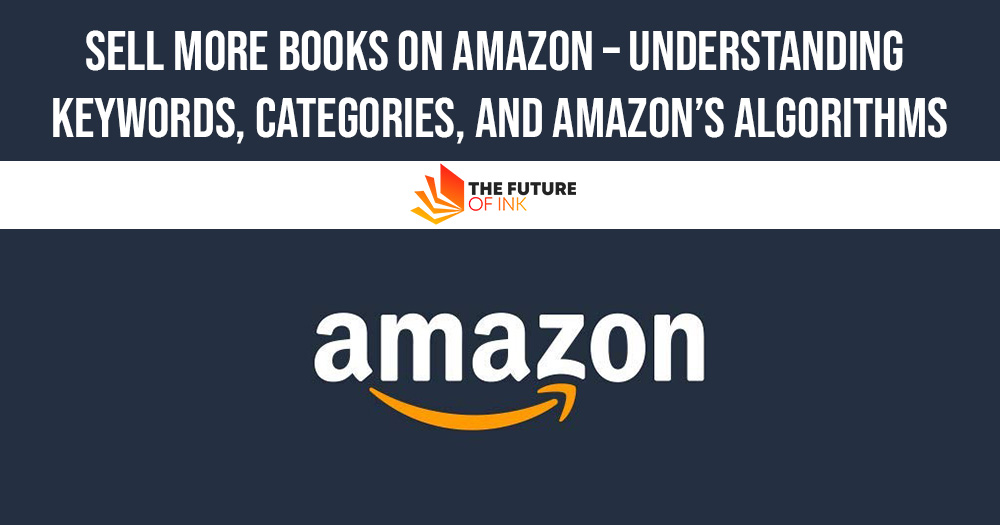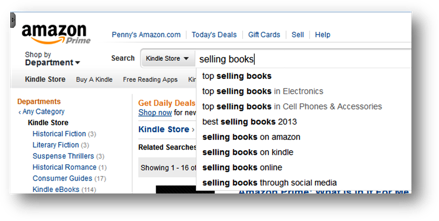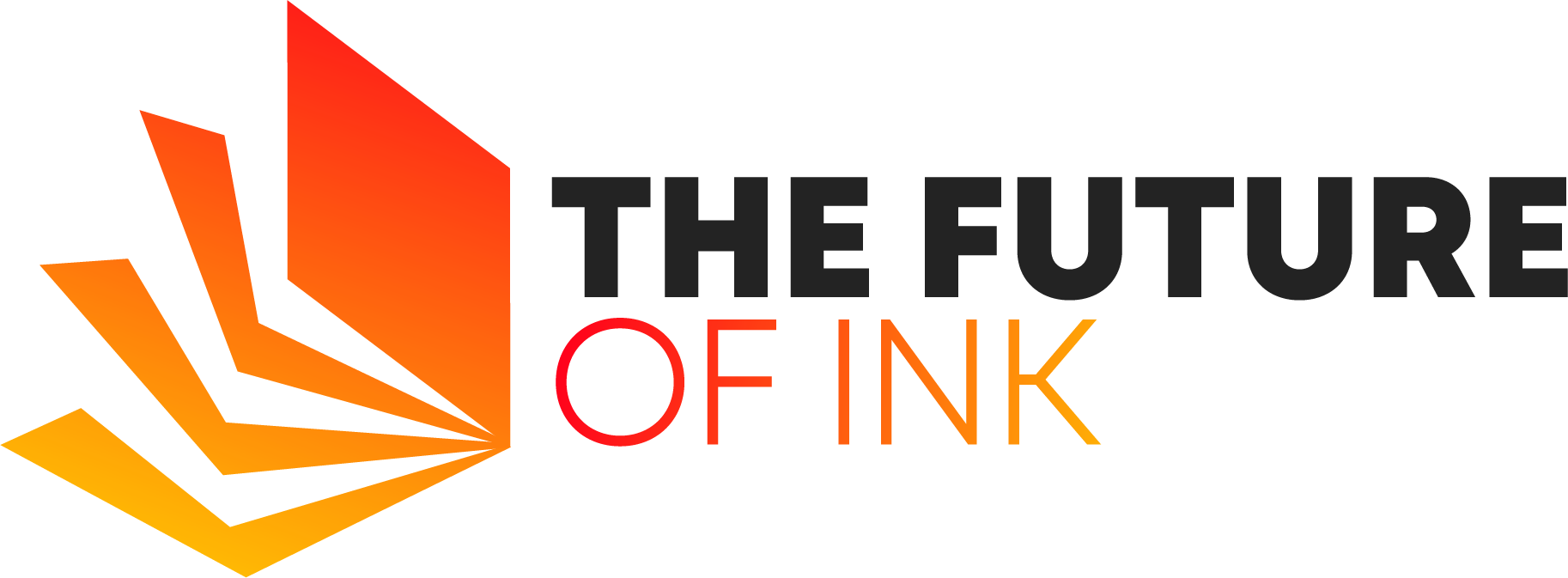Contents
Most of us know Amazon as one of the biggest online stores where you can get everything from the latest tech gadget to your favorite book.
But what many don’t realize is that Amazon is a search engine and subject to many of the same algorithm rules that sites like Google and Bing subscribe to.
When you want to expand your visibility in search engines, you start to look at things like keywords, tags, and content. The rules aren’t that dissimilar.
If a product or book is getting traction on Amazon, it will trigger their algorithm which then kicks in their internal promotion. And this gives you an opportunity to sell more books on Amazon.
What does Amazon’s internal promotion look like? It’s not that different from a real brick-and-mortar store really.
Let’s say your local Gap Store is seeing a sudden surge of turtlenecks that were previously stuffed in the back of the store, maybe on a small table by the dressing rooms.
The store recognizes that these are selling and moves the turtlenecks to the front of the store so more people can spot them.
What happens? They start selling even more. Now the store decides to pair them with something.

Let’s say a pair of cargo pants. Great! They add them to the table and update the mannequin display. The pants sell now nearly as well as the sweaters. Do you see a pattern here? This is what happens with Amazon, too.
Triggers such as keyword searches, categories, and spikes in sales that last longer than 48 hours start to ping Amazon’s algorithms, and the next thing you know, your book is showing up as a recommended buy and top of searches.
“The more you sell, the more Amazon wants to help you sell.” Makes sense, doesn’t it?
SEO and Your Amazon Page
In most cases, it’s easier to optimize a non-fiction book than a fiction book, however, when it comes to categories your fiction book may likely do better. (We’ll look at categories in a minute) Why are non-fiction books easier to optimize? Because there are fewer of them.
So what is Amazon optimization, really? Well, it’s your Amazon page (the actual book page) and your Amazon Author Central Page, both of which can be enhanced using keywords, reviews, pricing, and picking the right categories.
Also Read: How to Get Reviews by the Truckload on Amazon?
Keywords
First up, let’s take a look at keywords. What many authors and sellers don’t realize is that much like Google, Amazon has a fantastic keyword tool.
Most of you have probably experimented with typing in a keyword in the Google search bar and seen their suggestions pop up.
Amazon has the same search/keyword function. For example, if I type “selling books” into the search bar, it pops up quite a few search suggestions, one of which is “selling books on Amazon.”

When you input that search term (selling books on Amazon), my book, Selling Books by the Truckload on Amazon comes up on the first page (a good thing). When I was trying to decide what to name it, I did this search and looked at all of the titles that popped up.
Many of them were just titled: Selling Books on Amazon (smart authors) which digs right into the keywords and that’s what you want. That’s why you want to run this search.
The goal of this exercise is to either use this search when you’re titling your book, or if your book is already out there, you can use the keywords in your book’s description.
To do this on your own, you can either type in a keyword string, or even better, type in a single keyword and see what pops up.
So, let’s say you have a book about cooking. Type the word “cooking” into the Amazon search bar and you’ll see lots of suggestions such as “cooking for one” and “cooking for two,” you can then incorporate these keywords into your book title, subtitle, or description.
I would suggest doing this for each keyword associated with your book. You can do this same search using Google’s Keyword Tool on their Google AdWord page.
Keep in mind that for your book description, you can only use 7 keywords or keyword strings, and there’s no reason why you can’t also use popular author names. I’ve used author names in keywords often and it absolutely works.
Categories
If you’ve ever picked a category for your book and eBook you may have noticed that they don’t always match up. When I first encountered this I thought I was mistaken, turns out I wasn’t.
Whether it’s a glitch or done intentionally, the categories for books and eBooks aren’t the same. But there’s a simple way to fix this, more on this in a minute.
Ideally, when you’re picking a category you don’t want one with a broad, busy market. Ideally, you want a category that’s narrow. Why? Because Amazon’s algorithm is pinged when a book hits the top of a category.
For example, I was coaching this author about her romance novel and though she wanted to be top of the category in contemporary romance, the category was just too cluttered.
Instead, I suggested that she put her book under dramas, which was a sub (sub) category of contemporary romance.
The category (at the time) had only 81 other books in it, so getting her book to the top of that list wasn’t an issue.
Doing so triggered Amazon’s internal system and the next thing you know her book was coming up high in Amazon searches, being recommended to readers, and being pushed on the pages of other, very high-profile romance novels.
The thing with categories is while it’s tempting to put your book into a massively obscure category, you need to make sure that the category is one that belongs with your book, meaning don’t put your business book under a category that’s dedicated to some other specialty even if there are only three other competing books.
Some experts say that Amazon can pull your book altogether. I’m not sure this is quite accurate, but I have seen books get moved to the “appropriate” categories if the author decides to shuffle the book somewhere just so it will hit the top of the market.
Ready to start exploring the Amazon categories? Here is the link that’s essentially the hub to all of the Amazon categories.
Of all the work you do placing your book on Amazon, adjusting the keywords, etc., this might be the most key piece of marketing you can do so dig around in this list and make sure to put the book in the most narrow category you can. This will benefit your book tremendously.
Also, as a potential reader previews your Amazon page, it’s also eye-candy to see low book ranking, meaning books that are in the top ten of the category.
When I polled readers I found that they didn’t care what the category was, in fact, most times it didn’t register.
But when they saw #10 or #1 on a book page, it was often very helpful in making a sale. You see the ranking on the Amazon page, about halfway down:

Two final notes on categories, the first is that categories change. Dramas, for example, are no longer a sub-sub category in romance. I don’t know why Amazon does this but I suspect that shuffling around these categories is helpful to their internal system.
Finally, I mentioned earlier that Print and eBook categories often differ. When you find the category you want for your book, the first thing you may want to do is go to your backend and make these adjustments, i.e. change this category.
However, if your eBook is in the KDP system (Kindle Direct Publishing) you’ll need to email them through your Author Central Page.
Just hit the “help” button (again from within your Author Central Page) and email their staff. Most of the time you’ll find the email is responded to and the category adjusted within 24 hours.
They have a great response time, even better than through their publisher help page.
If you don’t know what the Author Central page is, check it out. You just use your Amazon login to access your page. Everyone has one, whether you’ve claimed it or not.
Also Read: Which eBook Publishing Platform is Best?
Other Ways to Trigger Amazon
There are a variety of other things you can do to help trigger the internal sales system at Amazon. eBook promos can do that (meaning freebie books offered through Amazon) but the eBook freebie days have to be promoted in order to be effective.
How do you make your eBook free? It’s all done through KDP (Kindle Direct Publishing). You get up to five freebie days but I would only recommend using two or three at a time.
Promote the book heavily on those days. Why? Because a high spike on freebie days can really benefit your book overall.
I’ve seen momentum carry through from freebie days and trigger a quicker climb up the ranking once the book goes back to a paid version.
Also, price and category switching will help to shake things up, too. What this means is that you play with the pricing, moving it high and low again every 6 weeks or so.
Also, you can shuffle a book in a category frequently, too. Though I’d recommend doing it just once every six weeks.
The idea is to send enough “juice” to your book through triggers that Amazon recognizes and responds to.
Typically, though, you can’t do just one of these items recommended, you’ll need to do all of them – but not necessarily at the same time.
I recommend you start with the keywords, then the category, then you can experiment with eBook promotion, category flipping, and vary the book pricing.
Give the process a week or so to “take hold” and then see what your efforts leverage in the way of visibility. The good thing about Amazon is that they don’t limit you to the number of changes you can make. Good luck!



